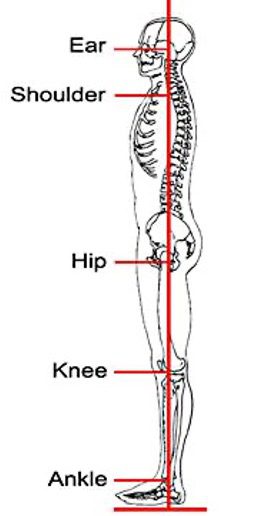At GH Singing Studio in Woolloongabba, our singing lessons focus on developing good, healthy vocal technique. Our expert singing teachers are committed to equipping students for a lifetime of successful singing. The first consideration in this quest is in adopting best posture and alignment of the body.

The basic structure of the human body can be visualised as three upside-down pyramids stacked on top of each other and connected by the vertebrae of the spine. This means that the centre of gravity for each of those parts is high, as is the overall centre of gravity for the whole body. To maintain its balance, alignment and stable upright stance, the body continually engages and adjusts its musculature. The result is excess muscular tension.
When standing in one place to sing or speak, with feet together, the muscles which control breathing, the actions of the larynx and the settings of the vocal tract, are constantly engaged and activated to maintain bodily balance. The resultant excess tension can impede the production of a free, skilled voice.
It is necessary, therefore, to negate this bodily imbalance. The centre of gravity must be lowered by assuming a more stable stance, which in turn facilitates a more efficient use of breathing and voicing muscles. This can be achieved as follows:
- Stand upright, with feet apart, one slightly in front of the other.
- Distribute the body’s weight evenly to both feet.
- Place the body’s weight slightly forward, with its weight on the balls of the feet.
- Engage the leg muscles with soft (slightly bent) knees.
- Assume the “noble” position, with sternum forward and slightly raised, and wide chest.
- Stand with shoulders back and down, completely free of tension.
- Hold the head in a level position, neither thrust forward nor back.
- Imagine helium-filled balloons or puppet strings attached to the head, so that the body is light and uplifted, and the spine is long.
When a singer assumes the perfect body alignment, it is possible to imagine a straight line passing through the ear, the shoulder, the hip, the knee, and the ankle. This is the ideal to strive towards and is a necessary step to ensure all the elements of the voicing mechanism are positioned for optimal performance.
Seated singing should, where possible, be performed on a chair with a wedge-like pad, sloping from back to front at an angle of 15 to 20 degrees. This will ensure that the upper legs are at an angle which ensures the pelvis and spine are aligned in much the same way as in standing. If such a pad is not available it is best to sit forward on the chair, with the back away from the back of the chair.
When singing higher pitches, it is important that the head does not tilt backwards, and the chin is not raised or thrust forward. This shortens the spine in the neck region and stretches the muscles attached to the larynx, placing pressure on the two laryngeal cartilages and the muscles which control pitch. Raising the chin and thrusting the jaw forward can alter the profile of the vocal tract and impair the fullness of vocal tone.

To improve your singing by developing your body balance and alignment technique, contact us for a free introductory lesson by emailing gordon@ghsingingstudio.com.au or phoning 0410 363 559.
